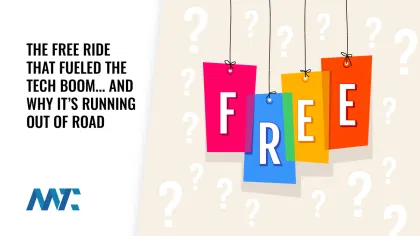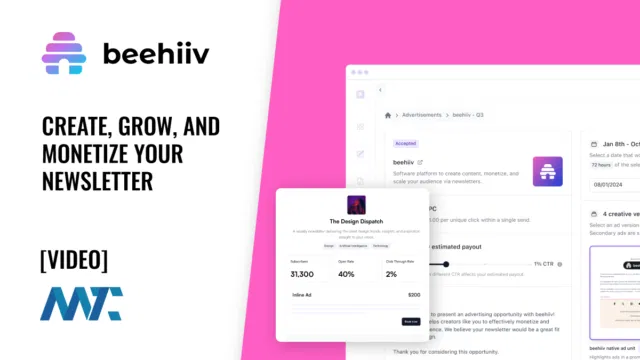The Free Ride That Fueled the Tech Boom… And Why It’s Running Out of Road

For more than a decade, much of the digital world operated under an unspoken social contract: get in early, grow fast, and don’t worry about the bill… yet. From consumer apps to enterprise platforms, technology was offered mainly on egalitarian terms. Anyone can sign up, integrate, deploy, or explore without incurring upfront costs.
Behind the scenes, VC funding played the role of benefactor, underwriting years of infrastructure, engineering, and onboarding costs while companies chased growth above all else. The model wasn’t merely generous; it was strategic. Ubiquity now, monetization later.
Growth Without Friction
This frictionless path to adoption gave rise to many of the most enormous tech titans in operation today. Google began as a clean, ad-free search engine. Facebook was free for users and focused on expanding its network. Slack and Dropbox offered freemium models so generous that entire departments ran on them for years before corporate IT got involved. Even AWS, the backbone of modern computing, made it easy to prototype and scale with its free tier and generous startup credits.
The success story was repeatable and straightforward: eliminate barriers to adoption, attract users in droves, then let the revenue catch up once the product becomes indispensable. Usage justified funding, which enabled scale, which in turn delivered dominance. Profit was an eventuality, not a priority.
This model has become deeply embedded in both startup and enterprise culture. In many cases, the first true customer of these platforms wasn’t the buyer… it was the user. By the time procurement arrived, the tool was already embedded in the team’s workflows. Monetization didn’t require aggressive selling; it was a natural evolution of dependence.
The AI Renaissance Echoes the Past
The rise of AI is tracing a familiar arc. Tools like ChatGPT, Grok, and Gemini have followed a similar early accessibility pattern: offering free or low-cost access, experiencing massive user adoption, and eventually implementing tiered monetization. Developer tools, API platforms, and AI-native SaaS solutions 1ted time to attract engineers and hobbyists, before introducing enterprise licenses and usage-based fees.
This is not accidental. The current wave of generative AI and intelligent automation technologies is expensive to operate but relatively inexpensive to try. Infrastructure costs, model training, and compute resources are substantial—but until the novelty wears off, these platforms are funded to prioritize user acquisition over bottom-line performance.
Enter the Spreadsheet Era
But this pendulum doesn’t swing endlessly. As interest rates rise, inflation persists, and capital becomes more conservative, the mood shifts. Investors are asking hard questions. Profitability becomes urgent. Unit economics are scrutinized. And the spreadsheet managers take the wheel.
In this phase, every product feature, support tier, and user touchpoint is re-evaluated through the lens of financial contribution. Upsell opportunities become euphemisms for what many users experience as paywalls, degraded functionality, or a creeping sense that what was once free is now a tease. The same services that once welcomed users now prod them into gated tiers, usage caps, or bundles they didn’t ask for.
This creates a new kind of friction: not in adopting the product, but in staying loyal to it.
Is It Really Working?
There’s reason to question whether the pivot to aggressive monetization is delivering what the spreadsheets promise. Customer churn is rising across SaaS categories. Loyalty is eroding not because competitors offer better tools, but because the customer experience (CX) has become frustrating.
People aren’t just tired of being sold to—they’re wary of the bait-and-switch. Freemium models that once felt generous now feel like traps. Legacy users find themselves priced out of features they relied on. Enterprise customers are often entangled in complex, multi-tiered licensing conversations and increasingly expansive SKU lists. Even long-time champions of platforms are stepping back, questioning whether the total cost justifies the increasingly convoluted value.
In this climate, the risk isn’t just lost revenue; it’s lost trust.
Finding Balance: Lessons for Sustainable Growth
Balancing growth, profitability, and loyalty requires more than toggling prices or squeezing margins. It demands a product and pricing philosophy grounded in user empathy and long-term value. Here are key takeaways for finding that balance:
- Design with value tiers, not traps: Freemium should serve as a viable working version of the product—not a broken preview. Ensure the free tier solves real problems and builds trust.
- Make upsells additive, not punitive: New features or higher usage tiers should feel like enhancements, not repairs. Avoid removing functionality and putting it behind paywalls.
- Incentivize usage, not just upgrades: Reward engagement and continued use with occasional benefits, extensions, or loyalty perks. Don’t just pressure users to convert—give them reasons to stay.
- Build for champions, not gatekeepers: Ensure the product experience delivers delight and utility to the user, not just the buyer. Advocates inside companies drive long-term adoption.
- Align pricing with outcomes, not just access: If customers can directly correlate what they’re paying to what they’re achieving, they’ll pay more confidently.
- Maintain transparency in changes: If pricing or feature access must change, communicate early and clearly. Be honest about what’s happening and why.
- Audit the customer journey regularly: Look for signs of “upsell fatigue,” hidden friction, or shrinking engagement. These are warning signs that the financial model is overwhelming the product value.
- Reinvest in trust-building: Documentation, community, responsive support, and education all help customers feel valued. These are as critical as any sales enablement tool.
The Road Ahead
Technology was never truly free, but for years, it felt as though it was, and that feeling fueled growth. Today, we stand at a crossroads. The AI era offers fresh momentum, but the same pressures that unraveled past successes are creeping in. It’s not the end of freemium, but it is a moment of reckoning.
If platforms want to retain their audiences, they must rediscover what made their early adoption work so well: trust, utility, and value that compound over time—not just cost that creeps upward.







